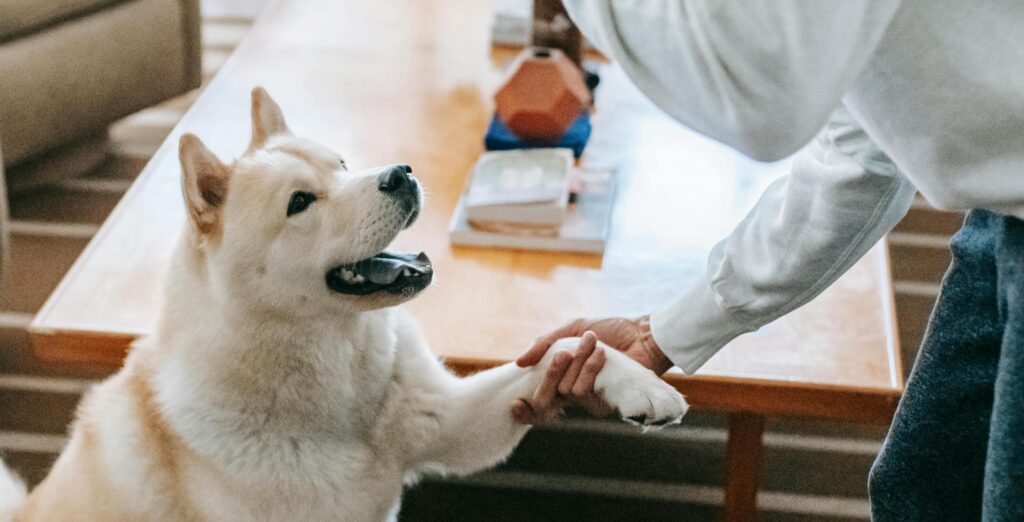
Собаки – це не просто домашні тварини; вони є невід’ємною частиною наших сімей. Таким чином, важливо вкладати час і енергію у їхнє тренування, щоб забезпечити їхню добре вихованість, щастя і безпроблемну інтеграцію в наші домівки та життя. Тренування вашої собаки – це не просто навчання її трюкам, але й ефективне спілкування, взаємна повага та зв’язок. Це про розкриття їхнього потенціалу бути вірними, слухняними та радісними супутниками. У цьому блозі ми розглянемо основи ефективних методів і технік дресирування собак.
Зміст
Розуміння поведінки вашої собаки
Розпочинаючи шлях дресирування собаки, важливо отримати міцне розуміння поведінки вашого пухнастого друга. Собаки унікальні, кожна має свою окрему особистість, настрій та мотивацію, подібно до людей. Ключ до розуміння суті поведінки вашої собаки полягає у розшифровці їхніх сигналів та мови тіла.
Махання хвостом може відображати цілий спектр емоцій, від повної ейфорії до тривожного занепокоєння. Положення їхніх вух може вказувати на те, чи вони із зацікавленістю цікаві або страхом насторожені. Навчившись інтерпретувати ці тонкі сигнали, ви можете зануритися у емоційний світ вашої собаки, отримуючи безцінні знання, які допоможуть вам сформувати підхід до тренування.
Здатність розуміти поведінку вашої собаки – це не тільки про визначення їхніх емоцій; це про розуміння їхніх потреб, бажань і сприйняття навколишнього середовища. Чи ваша собака грайлива і потребує регулярної стимуляції? А може вони більш замкнені, віддаючи перевагу спокійному та тихому оточенню. Визнання цих уподобань може надати вам маршрутну карту для створення тренувальної рутини, яка відповідає індивідуальним потребам вашої собаки.
Це розуміння поведінки вашої собаки послужить вашою секретною зброєю у дресируванні, сприяючи глибшому зв’язку між вами. Це про навчання розмовляти їхньою мовою, емпатію до їхніх переживань і адаптацію ваших тренувальних технік до їх унікальної особистості. Таким чином, ви не просто тренуєте свою собаку, а будуєте зв’язок, заснований на взаємній повазі та розумінні.
Важливість послідовності у тренуванні собаки
Послідовність є ключовою у сфері дресирування собак. Уявіть, що у вас є різні правила та очікування вдома, у школі та на роботі щодня. Це було б досить заплутано, чи не так? Ось так само може почуватися ваша собака, коли у її тренуванні відсутня послідовність.
Ваш чотириногий друг – це істота звички, яка процвітає на передбачуваності та рутині. Послідовність у командах, винагородах, а навіть у тоні вашого голосу допомагає створити чітку лінію спілкування між вами та вашим пухнастим другом. Якщо одного дня ви хвалите свою собаку за те, що вона сидить на вашу команду, а наступного дня ігноруєте ту саму дію, ваша собака може отримати змішані сигнали. Вони можуть заплутатися або розчаруватися, не розуміючи, чого саме ви від них хочете.
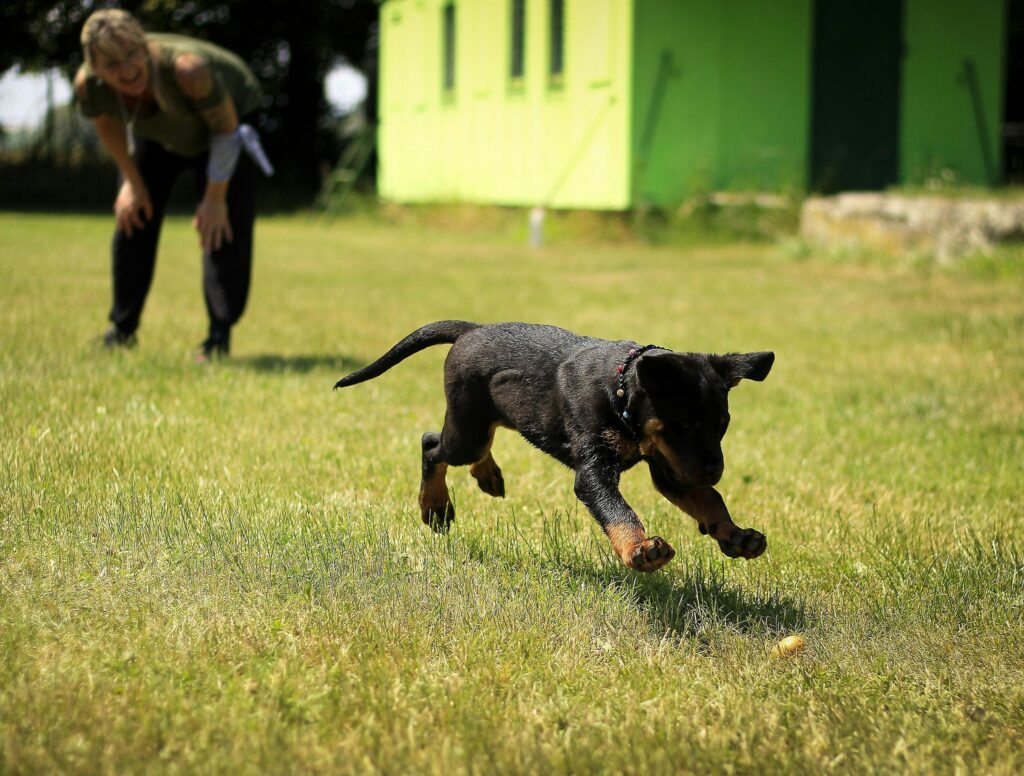
Щоб уникнути цього замішання, важливо, щоб усі члени сім’ї були на одній сторінці щодо тренування. Це означає використання тих самих команд і дотримання тієї ж системи винагороди, все це допомагає підтримувати послідовне середовище тренування. Навіть ваша сімейна собака оцінить сімейну нараду, щоб переконатися, що всі розуміють свою роль у цьому процесі.
Пам’ятайте, послідовність – це не про те, щоб бути непохитним або нееластичним; це про створення стабільного та зрозумілого середовища навчання для вашої собаки. Так, хоча не кожен день може бути досконалим, прагнення до послідовності значно вплине на шлях тренування вашої собаки. Це все про встановлення чітких очікувань і дотримання їх, створюючи збагачений досвід навчання для вашого чотириногого члена сім’ї.
Позитивне підкріплення: Ключ до успіху
Відкрийте для себе силу позитивності з підходом позитивного підкріплення, який є кутовим каменем ефективного тренування собак. Ця техніка зосереджена на відзначенні та винагородженні прикладних поведінок вашої собаки, і це набагато більше, ніж просто роздавання ласощів. Це про визнання хороших вчинків вашої тварини та створення почуття цінності їхніх дій. Чи це радісне махання хвостом, захоплений гавкіт або просте сидіння, кожна хороша поведінка заслуговує на “молодець”, погладжування, ласощі або їхню улюблену іграшку.
Але ось хитрість: все залежить від часу. Позитивне підкріплення працює найкраще, коли винагорода надається негайно. Уявіть, що ваша собака вперше принесла м’яч. Якщо ви даєте їм ласощі через п’ять хвилин після цього, вони можуть не зрозуміти, за що їх нагороджують. Натомість винагорода має бути дана протягом кількох секунд після виконання бажаної дії. Таким чином, вони можуть асоціювати хорошу поведінку з винагородою, мотивуючи їх повторити дію у майбутньому.
Розгляньте перетворення тренувальних сесій на гру з винагородами. Ваша собака сидить на вашу команду? Дайте їм ласощі. Вони терпляче чекають, поки ви готуєте їхню їжу? Осипайте їх похвалами. Вони принесли м’яч? Винагородьте їх грою у перетягування каната. Таким чином, ви не лише підкріплюєте бажану поведінку, а й робите процес навчання веселим та приємним досвідом для вашої тварини. Пам’ятайте, ваша мета – змусити вашу собаку асоціювати слухняність з позитивними переживаннями.
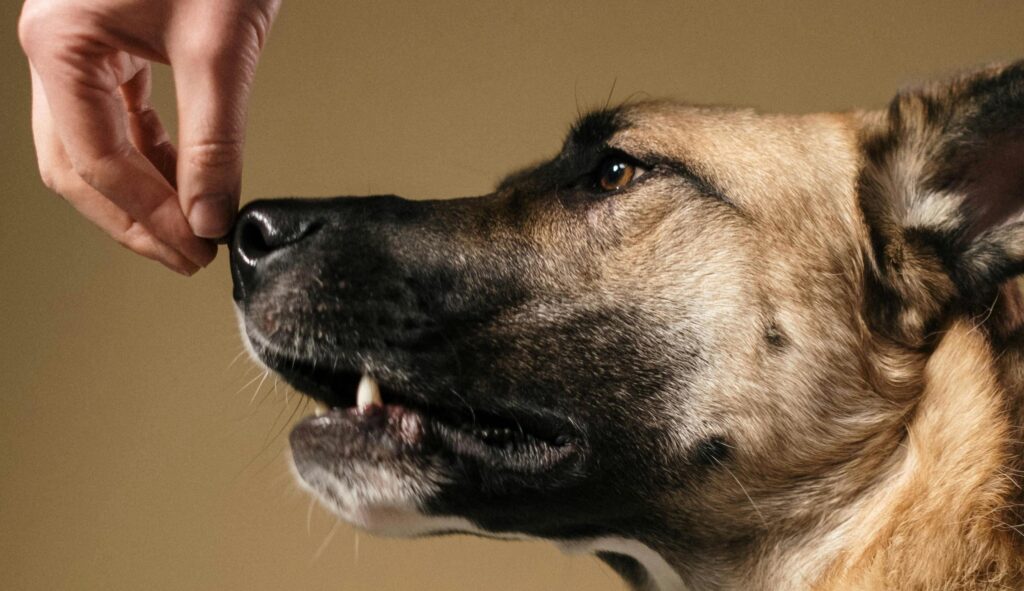
Також майте на увазі, що тип винагороди теж має значення. Визначте, що мотивує вашу собаку найбільше. Чи це їжа, певна іграшка або просто ваша любов? Як тільки ви відкриєте, що найбільше радує вашу тварину, використовуйте це як винагороду під час тренувань. Позитивне підкріплення – це все про використання того, що ваша собака любить, для сприяння тому, що ви любите – хорошій поведінці!
Впровадження політики “Немає безкоштовного обіду”
Ви коли-небудь помічали, наскільки ваш пухнастий друг цінує речі, які він обожнює, наприклад, улюблені ласощі, їжу чи щоденну прогулянку? Політика “Немає Безкоштовного Обіду” використовує цю любов, щоб заохотити хорошу поведінку. Ця тактика полягає в тому, щоб зробити так, щоб ваша собака усвідомила, що речі, які вона любить, приходять за ціною – послух.
Скажімо, вашому щеняті подобаються прогулянки. Не просто пристебніть повідок і вийдіть на вулицю, а змусьте їх заробити це право. Попросіть їх сісти або зачекати, перш ніж пристебнути повідок. Це показує їм, що виконання команд призводить до винагород – у цьому випадку, до прогулянки по району.
Таким же чином можна застосовувати цю політику під час годування. Замість того, щоб просто подати їжу, накажіть їм виконати команду, наприклад “сидіти” або “зачекати.” Це передає чітке повідомлення: хороша поведінка є шляхом до задоволення.
Політика “Немає Безкоштовного Обіду” також поширюється на улюблені іграшки або місце на дивані. Всі ці приємні моменти можуть перетворитися на можливості для вашої собаки продемонструвати найкращу поведінку.
Краса цього підходу полягає в його простоті. Він легко вписується у ваш щоденний розпорядок, роблячи його нескладним, але ефективним методом тренування. Він встановлює рутину, де послух стає нормою, а не винятком.
Майте на увазі, це не про позбавлення вашої собаки її потреб або бажань. Це про навчання її цінувати свої привілеї та розуміти, що хороша поведінка призводить до винагород. Ви по суті перетворюєте їхні улюблені речі на мотиваційні інструменти для сприяння хорошим манерам і послуху.
Пам’ятайте, ваш щеня готовий вас задовольнити. Політика “Немає Безкоштовного Обіду” допомагає їм зрозуміти, як це зробити, пов’язуючи речі, які вони хочуть, з поведінкою, яку ви хочете бачити. Таким чином, і ви, і ваш чотириногий супутник отримуєте те, що хочете, створюючи ситуацію, вигідну для обох!
Як ладнати з небажаною поведінкою
На шляху дресирування вашої собаки неминуче виникнуть моменти, коли ваш пухнастий друг займеться поведінкою, яка змусить вас замислитися. Можливо, це раптова одержимість вашою улюбленою парою взуття, безперервна серія гавкання або незвичайна зацікавленість сміттєвим баком. Навігація в цих моментах може здатися непростою, але важливо пам’ятати, що покарання не є відповіддю. Замість цього виберіть метод, який є одночасно співчутливим і ефективним: перенаправлення.
Перенаправлення – це мистецтво відволікання вашої собаки від небажаної поведінки та направлення її на дію, яка більше вам до вподоби. Замість докорів за гризіння дивана, дайте їм жувальну іграшку, яка буде тільки їхньою. Замість того, щоб кричати, коли вони копають ями в саду, створіть спеціальне місце, де їм дозволено вдовольняти своє захоплення копанням. Мета полягає в тому, щоб замінити небажану поведінку прийнятною альтернативою.
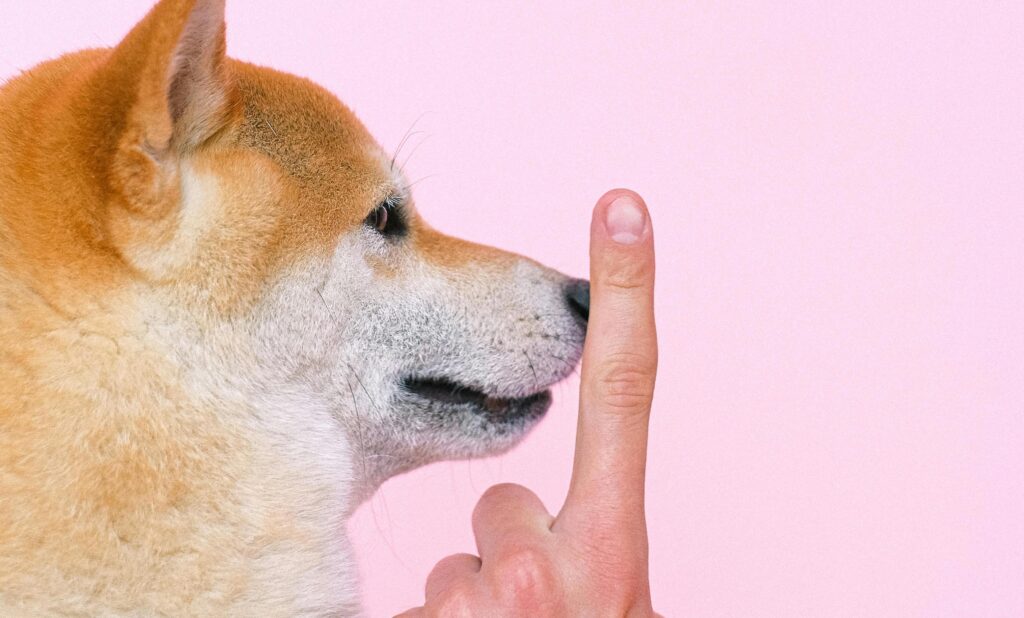
Однак пам’ятайте, що собаки не роблять розрізнення між “доброю” та “поганою” поведінкою так, як ми це робимо. Вони просто намагаються задовольнити потребу або виразити емоцію. Тому важливо зрозуміти причину їхніх дій. Чи вони нудьгують, тривожаться або шукають уваги? Виявлення основних причин може допомогти вам вирішити корінь проблеми, а не просто керувати симптомами.
Перенаправлення поведінки не є миттєвим рішенням; це вимагає наполегливості та послідовності. Однак з часом ви почнете помічати позитивні зміни в поведінці вашої собаки. Терпіння є ключовим у ці моменти, оскільки гнів або розчарування можуть порушити зв’язок між вами та вашим пухнастим другом, ускладнюючи процес тренування.
Пам’ятайте, кожен невдалий крок є можливістю для навчання та розвитку. З розумінням, терпінням та ефективними техніками перенаправлення ви можете направити свого чотириногого супутника на шлях до становлення добре вихованою частиною вашої сім’ї.
Дресирування собаки: Терпіння є надзвичайно важливим
Проходження шляху дресирування собаки іноді може здаватися як підйом вгору, із викликами, які потрібно подолати, і віхами, які потрібно досягти. Однак пам’ятайте, Рим не був побудований за один день, і так само ваш ідеально вихований чотириногий друг не буде вихований миттєво. Терпіння є керівним принципом, який перетворить цю подорож з непосильної на винагороджуючу.
Тренування собаки – це безперервний процес, а не одноразова подія. Він вимагає не тільки часу, але й терпіння та відданості. Це про святкування малих перемог, таких як ваша собака, яка нарешті освоїла команду “сидіти” або правильно ходить на повідку. Це також про наявність витривалості, щоб працювати через невдачі, не втрачаючи з виду більшу картину.
Іноді може здаватися, що вашій собаці важко зрозуміти команду, або, можливо, вони повертаються до старих звичок. У ці моменти дуже важливо залишатися терплячим і не допускати проникнення роздратування. Собаки, як і люди, відчувають емоції. Якщо вони відчують ваше роздратування, це може зробити їх тривожними або нервовими, перешкоджаючи їх здатності ефективно навчатися.
Натомість прагніть зберігати спокійний і позитивний настрій. Підкріплюйте хорошу поведінку та обережно виправляйте помилки. Пам’ятайте, терпіння – це не про очікування; це про підтримання позитивного ставлення під час очікування. З долею терпіння, ложкою розуміння та щіпкою послідовності ви готуєте сцену для винагороджуючої та успішної подорожі тренування.
Так, терпіння – це чеснота, але в дресируванні собак воно набагато більше. Це секретний інгредієнт, який може перетворити ваші зусилля з дресирування собак з просто функціональних на дійсно ефективні. Так що, зробіть глибокий вдих, залишайтеся терплячими і пам’ятайте – кожен день наближає вашу собаку до становлення добре вихованим членом вашої сім’ї!
Сила соціалізації
Одним з найбільш винагороджуючих аспектів дресирування собак є допомога вашому пухнастому другу стати соціально активним. Соціалізація полягає у знайомстві вашого щеняти з різними людьми, місцями, тваринами та переживаннями, що поступово розширює їхню зону комфорту. Так само, як і ми, люди, собаки процвітають у соціальних взаємодіях, і знайомство їх з різноманітними середовищами допомагає їм пристосовуватися та розвиватися.
Відведіть свого щеняти до місцевих собачих парків або запишіть його на класи для щенят. Вони забезпечують контрольоване середовище, де ваша собака може навчитися взаємодіяти та грати з іншими собаками. Вони не тільки навчаться важливих соціальних сигналів, але й отримають можливість випустити трохи енергії!
Розгляньте можливість організації ігрових побачень для собак з друзями або сусідами, у яких є собаки. Ці один-на-один взаємодії можуть бути менш важкими для вашої собаки, ніж людний собачий парк, і можуть допомогти розвивати тривалі дружби між собаками.
Не обмежуйте соціалізацію тільки іншими собаками. Знайомте свою тварину з широким колом людей різного віку та зовнішності. Це може включати членів сім’ї, друзів або навіть листоношу. Мета полягає у привчанні їх до різних голосів, запахів і поведінки, що зменшує ймовірність страху або агресії в майбутньому.
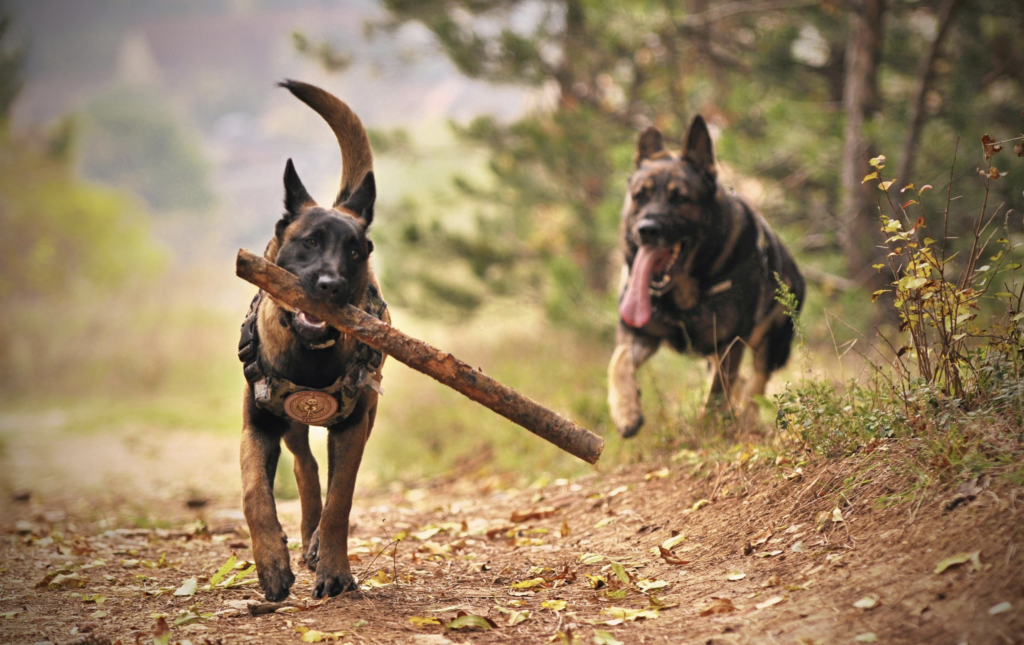
Пам’ятайте, соціалізація – це не тільки про зустрічі з іншими; це також про переживання різноманітних середовищ. Відведіть свою тварину на різні маршрути прогулянок, відвідайте магазини, дружні до тварин, або навіть посидьте разом у людному відкритому кафе. Таке впровадження може допомогти вашій собаці відчувати себе більш впевнено і менш тривожно у різних ситуаціях.
Сприймайте соціалізацію як пригоду, на яку ви вирушаєте разом. Це не про те, щоб перевантажити вашу тварину, а про поступове та позитивне знайомство її з широким світом навколо. Цей проактивний підхід до соціалізації створить умови для успіху вашої собаки, допомагаючи їй стати впевненою, дружелюбною та добре пристосованою супутницею.